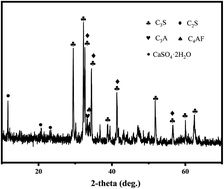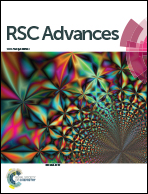Long-term leaching behaviours of cement composites prepared by hazardous wastes†
Abstract
In order to evaluate the long-term environmental impact of Eco-Ordinary Portland Cement (EOPC) prepared by municipal solid wastes (MSS) and hazardous wastes (HW), consecutive leaching tests with a time span of 180 days were conducted on the EOPC composites in the compact and ground forms under deionized and saline water conditions. The results show that the heavy metals investigated can be classified into three groups according to their leaching behaviours. The concentrations of V, Pb, Ni, Ba, Cd and Zn in the leachate increase with the leaching time, which can be classified into the first group. Cu and Sn are in the second group, and their concentrations increase initially, and decline afterward. Cr and As are in the third group, and their concentrations decline firstly, followed by a clear increase. Besides, a kinetic study was also conducted in the present study, revealing that the leaching behaviours of heavy metals follow a second-order model. Furthermore, our results suggest that the EOPC is resistant to the saline water, but the application of such materials in marine conditions should be paid attention to due to the pollution of arsenic.



 Please wait while we load your content...
Please wait while we load your content...